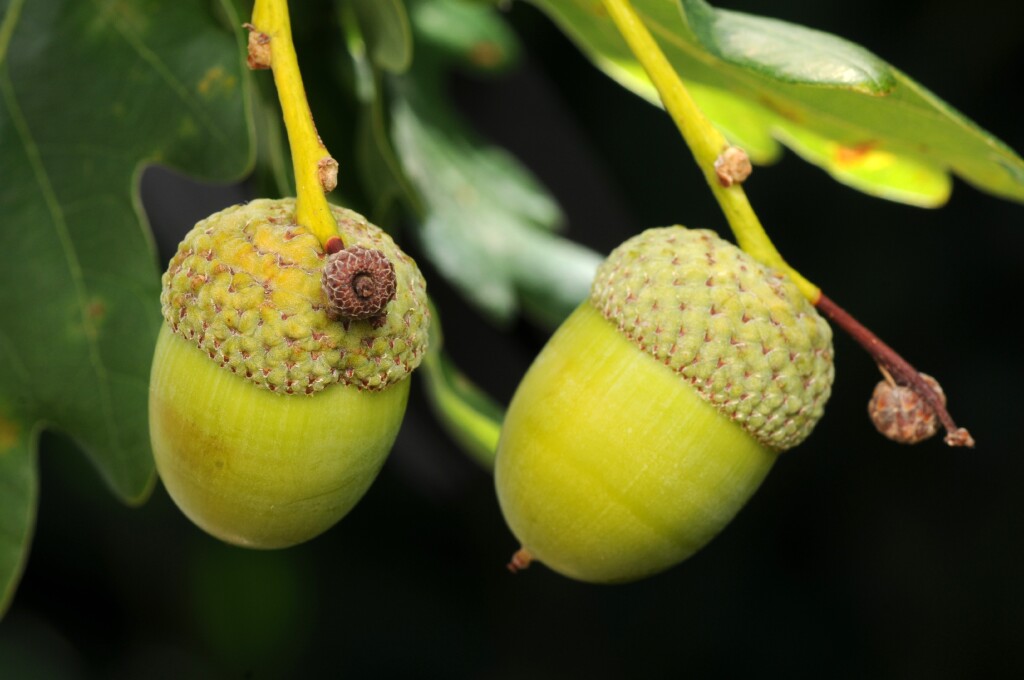Fagaceae
Trees or rarely shrubs, mostly monoecious, deciduous or evergreen; buds enclosed by scales. Leaves alternate, simple, petiolate; margin entire to toothed, scalloped or lobed; stipules present but shed early. Flowers unisexual (mostly), arranged in catkins. Male catkins rather lax, with few- to many-flowered clusters, bracts present or absent; perianth of (3)4–6(–8) sepals; stamens as many as sepals or more (to c. 20). Female catkins rigid to somwhat lax; flowers with perianth of 4–6 free or fused sepals; ovary inferior, mostly 3-carpellate, each carpel 2-ovulate, but usually only one ovule per ovary maturing; styles 1 per carpel, free; staminodes sometimes present. Fruits nuts, sometimes winged, subtended or partly enclosed (individually or in 2s or 3s) by scaly or spiny cupules composed of fused bracts.
Nine genera with c. 750 species in temperate to tropical areas, mostly of the Northern Hemisphere. Oaks (Quercus), Beeches (Fagus) are widely grown in parks and gardens. Chestnut (Castanea sativa), a native of Europe and south-west Asia, is widely grown in cooler districts but has not naturalised in Victoria.
Entwisle, T.J. (1996). Fagaceae. In: Walsh, N.G.; Entwisle, T.J., Flora of Victoria Vol. 3, Dicotyledons Winteraceae to Myrtaceae, pp. 89–90. Inkata Press, Melbourne.
 Spinning
Spinning


